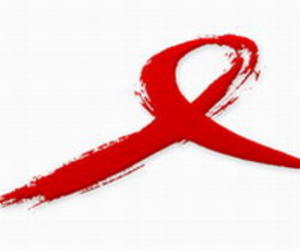H.I.V./AIDS: Tales From Cuba
- Submitted by: lena campos
- Health and Medicine
- 05 / 08 / 2012

Yudelsy García O’Connor was the first known H.I.V.-positive baby in Cuba. She grew up in a sanitarium but today she is healthy and lives on her own.
Related
Enrique Lopez Vizcaino, and his wife, Maria Elena Becquer. Mr. Vizcaino was infected in 1977 and did not get antiretroviral drugs until 1996. He met Mrs. Becquer in a sanitarium and they both work as AIDS educators.
Yudelsy García O’Connor was the first known H.I.V.-positive baby in Cuba. Born Aug. 14, 1986, she is now 25 — tiny, but healthy. She is also lively, funny and irreverent, divorced and hoping to remarry and have children.
She was 3 before anyone realized that she was infected. Her father had been a soldier stationed in Angola. On his return in 1982, he worked as a truck driver, a job that helped him have girlfriends all over this island; he infected five of them.
Ms. García’s illness was discovered through a long line of contact-tracing. Her father had divorced her mother, but his second wife tested positive during a routine pregnancy screening. He was asked to name all his sexual partners, they and their children were tested.
Her growth was stunted, and she had anemia and lung problems. There were no drugs for AIDS at the time, but in 1990 she and her mother were moved to the country’s first sanitarium, in Santiago de Las Vegas, near Havana, and she grew up there.
“From the beginning, she captured our hearts,” Dr. Jorge Pérez Ávila, Cuba’s leading AIDS doctor, wrote in “AIDS: Confessions to a Doctor,” his memoir of his favorite patients, living and dead. “She was very thin, dark-haired, small and congenial, eager to play with anyone around.”
In 1993, when sympathetic Americans smuggled the experimental new drug AZT into Cuba, Ms. García was one of the first to get it.
When Cuba started producing its own basic AIDS drugs in 2001, she got triple therapy.
Now she has two modern drugs in her mix, thanks to the Global Fund to Fight AIDS, Tuberculosis and Malaria, which pays for some of the newer drugs that Cuba doesn’t make.
As a youngster, she was a poster child for the country’s effective AIDS program. She met the pope and former President Jimmy Carter.
But the system that sheltered her has now forgotten her.
At 21, she married another sanitarium resident and moved with him to his hometown — Aguacate, a flea-bitten place an hour’s drive from Havana where most residents work at a sugar refinery.
Her mother died in 2010, after she temporarily stopped taking her medicine. Then Ms. García’s husband left her; she tears up at any mention of that.
She now shares a one-bedroom shack in Aguacate with a friend. Her espresso pot has no lid. She turns on her hot plate by hooking two bare wires together.
She earns $8 a month overseeing a refinery vat, with a $10 bonus if she has no sick days.
It’s a long way from her happy sanitarium childhood; she is proud that she has her own place, but wishes she could afford to return to Havana.
Enrique Lopez Vizcaino
Enrique Lopez Vizcaino, 58, is a retired lieutenant colonel, an educator at the National Center for AIDS Prevention — and a medical marvel.
He was infected in 1977, four years before the “discovery” of AIDS was announced in an American medical journal’s article about unusual pneumonias in gay men.
He did not get antiretroviral drugs until 1996, but he is clearly a rare “slow progressor” — someone whose immune system is much better than average at fighting the virus.
He did have two bouts with leukemia, in 1991 and 2005, but it seems to be in remission.
Mr. Vizcaino is certain of his infection date because of his sexual history. As a young lieutenant, he was stationed from 1976 to 1979 in Pointe Noire, Republic of Congo, as a military adviser to the Congolese army.
The only woman he slept with during those years, he said, was a Soviet woman, a language teacher also stationed there.
“AIDS was unknown at the time, of course,” he said, “but I was careful of Congolese women because there were many other diseases.”
Her name was Noema, but he could not recall her surname. During their affair, she taught him French and he taught her Spanish.
After his infection was diagnosed in late 1986, he wrote to her in Russia and they spoke on the phone. She said she had slept with Congolese men, he said. By 1986 she was already sick; she died in 1989.
Source: NYTimes.com
Comments